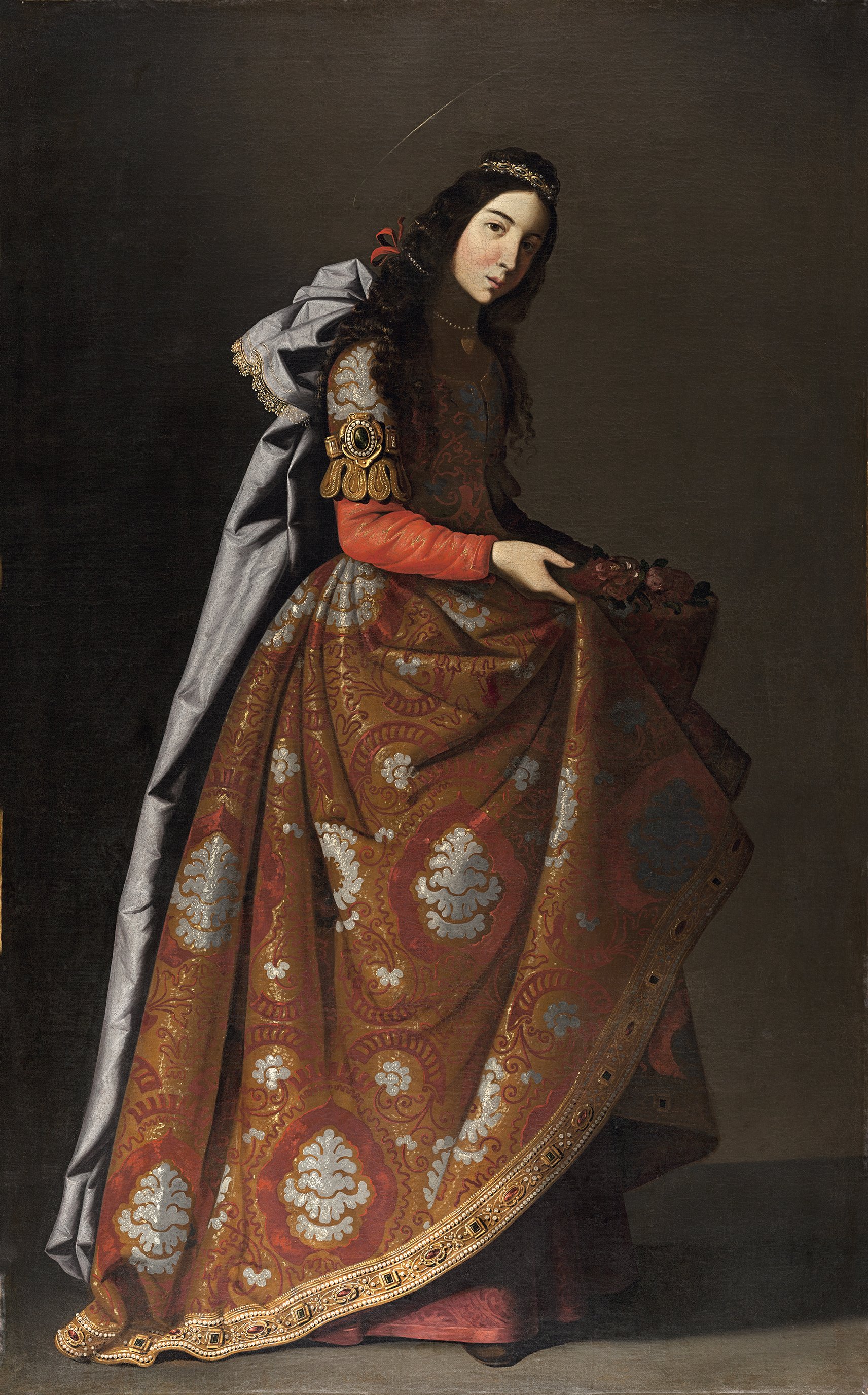Images of saints depicted alone, holding their attributes, and looking out of the picture space were among the most popular compositions within Francisco de Zurbarán’s output, and he approached this motif in a unique manner. The fact that there is evidence that the artist sent several series of images of female martyr saints to South America is proof of their popularity. In 1647 the artist was paid for 24 virgin saints for the monastery of Nuestra Señora de la Encarnación in Ciudad de los Reyes, Perú, while in 1649 he sent another 15 to Buenos Aires.
Saint Casilda has been identified in some publications as Saint Elizabeth of Hungary as both of these saints have roses as their traditional attribute. The absence of a crown on her head, typically found in depictions of Elizabeth, led Jonathan Brown to identify this saint as Casilda, who here wears a gold and pearl headband.
Daughter of an Arab king, Casilda was martyred in 1087. She had left the Islamic faith and converted to Christianity, taking food to her father’s Christian prisoners. Surprised by her father during one of these risky visits, a miracle occurred and the food hidden about her body was transformed into roses, the traditional attribute of this saint.
Richly dressed both with regard to her jewelry and costly, jewel-embroidered gown, the saint is modelled with a strong light that emphasizes her monumental stature and highlights the strong colors of her clothes against a simple, graduated background. Zurbarán paid particular emphasis to the textures of her clothes and to the gold embroidery and jewelry. The notably individualized features of some of these martyr saints has led to the formulation of the concept of the retrato a lo divino, in which these saints would be portraits of real women, depicted with holy attributes.
We present today's pearl of Spanish Baroque art thanks to the Museo Thyssen-Bornemisza.
Dear DailyArt users, we are developing a new, superb version of DailyArt and we need $100,000 to do it. Learn how can you help us (and what our plans are). :)
P.S. Did you know that Francisco de Zurbarán was called the "Spanish Caravaggio?" Learn more about this fascinating painter.


 Francisco de Zurbarán
Francisco de Zurbarán